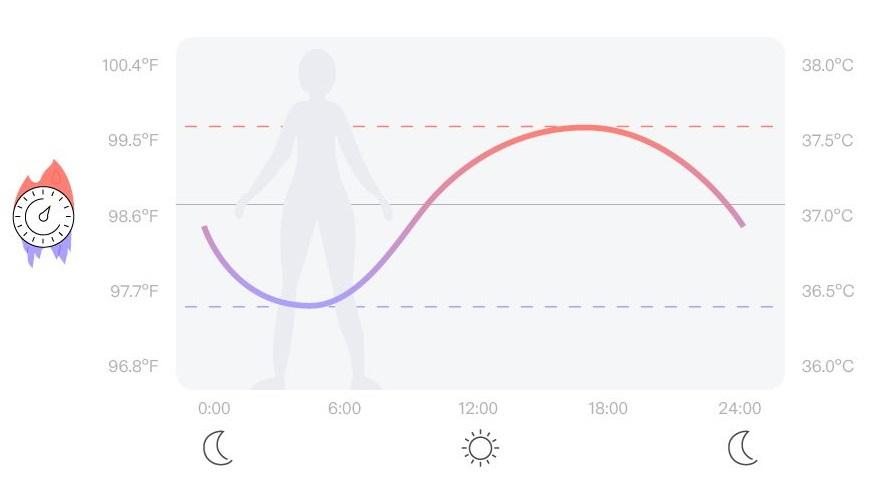Title: The New Normal: Sudden Temperature Swings in a Warming World
As global temperatures rise due to climate change, scientists are identifying a perplexing trend: rapid transitions between extreme heat and unexpected cold. A recent study featured in the prestigious journal Nature reveals that these abrupt temperature changes are becoming more frequent and severe, prompting concerns about their effects on ecosystems, agriculture, and public health. Experts contend that these fluctuations are not isolated incidents but rather alarming signs of how climate change is disrupting established weather patterns, potentially leading to unpredictable and disastrous outcomes. As we face rising global temperatures, it is essential to comprehend these sudden temperature shifts as we prepare for a future where such volatility may become commonplace.
Effects of Climate Variability on Ecosystems and Biodiversity
The growing occurrence of temperature swings presents serious challenges for ecosystems as species struggle with rapid changes between warm and cold environments. These extremes can result in:
- Loss of Habitat: Certain species may find their natural environments increasingly inhospitable as conditions shift dramatically.
- Disrupted Species Interactions: Warmer climates can speed up the life cycles of some organisms while hindering others, upsetting predator-prey relationships and pollination activities.
- Aquatic Stress: Temperature variations can cause stratification issues in aquatic systems, diminishing oxygen levels and creating “dead zones.”
Moreover, biodiversity faces significant threats as species unable to adapt quickly enough risk extinction. Recent research indicates that many organisms encounter challenges such as:
- Migratory Disruptions: Animals dependent on specific seasonal cues for migration are facing mismatched timings that lead to population declines.
- Diminished Genetic Diversity: Extreme conditions can wipe out certain traits within populations, weakening their ability to cope with future environmental changes.
- Spreadof Invasive Species: Warmer climates create favorable conditions for non-native species which may outcompete local flora and fauna.
| Description of Impact | Delineation |
|---|---|
| Ecosystem Alteration | Dramatic temperature shifts reshape existing habitats. |
Upgrading Infrastructure for Temperature Fluctuations
With the planet experiencing more erratic temperature variations than ever before, it is imperative for urban planners and civil engineers to reevaluate current infrastructure designs so they can withstand these sudden climatic challenges. Conventional materials often fail under abrupt temperature changes leading to structural vulnerabilities along with increased maintenance expenses. Employingand innovative architectural designs offers more robust solutions. Key strategies include:
- < strong >Improved Thermal Insulation:< / strong > Using materials with superior insulation properties helps minimize heat loss during colder months while reducing heat absorption during warmer periods.< / li >
- < strong >Flexible Structural Designs:< / strong > Creating infrastructures capable of flexibly adjusting reduces stress from extreme temperatures thus preventing premature failures.< / li >
- < strong >Green Roofs & Vertical Gardens:< / strong > These features help regulate temperature fluctuations while enhancing energy efficiency alongside urban biodiversity.< / li >
< / ul >Governments must prioritize investments into, integrating technology capable of monitoring real-time temperature variations allowing adjustments accordingly . This transition requires collaboration among engineers , climate scientists , policymakers ensuring responsive systems protect communities against adverse effects stemming from extreme temperatures . Socio-economic implications surrounding infrastructure adaptation should also be considered through comprehensive assessments including:
Investment Focus< / th > Anticipated Advantage< / th >
tr > thead >
< td >Climate-resilient Materials< td >< td Long-term durability coupled reduced lifecycle costs< td > tr >
< td Smart Temperature Control Systems < td Enhanced energy efficiency alongside diminished emissions tr >
< td Community Education Initiatives < td Heightened public awareness promoting engagement towards climate action tr > < tbody > table >
Agricultural Resilience Amidst Climate Instability
As climatic patterns become increasingly unpredictable , farmers are adopting innovative techniques aimed at adapting crops amidst fluctuating temperatures along with extreme weather events . One primary approach involves diversifying crop varieties enhancing resilience . By cultivating various crops simultaneously ensures at least part yield remains viable despite adverse conditions thereby mitigating risks whilst supporting soil health fostering robust agroecosystems . Key methods encompass :
- < Strong Crop Rotation:< Strong Changing crop types seasonally disrupts pest cycles improving soil fertility.< Li />
- < Strong Perennial Crops:< Strong Introducing deep-rooted plants accessing moisture nutrients deeper soil layers enhances resilience.< Li />
- < Strong Seasonal Planting:< Strong Timing planting harvesting based upon climatic predictions avoids worst impacts from extremes.< Li />
< ul />Additionally adopting advanced agricultural technologies significantly mitigates impacts stemming from climatic volatility . Precision farming techniques utilizing soil moisture sensors alongside forecasting tools empower farmers making informed decisions regarding irrigation fertilization optimizing resource utilization ensuring crops receive necessary support thriving under stress .
To illustrate benefits derived through technology-assisted practices below compares traditional versus modern methodologies :
In conclusion , the rising frequency associated rapid fluctuations underscores complex dynamics inherent within our changing climate system . As researchers delve deeper unravel intricate connections linking warming trends alongside extreme weather phenomena it becomes clear these shifts represent not mere anomalies but indicators reflecting broader volatile atmospheric behavior impacting ecosystems agriculture human livelihoods alike understanding mitigating consequences arising will prove vital navigating profound challenges posed by ongoing climate change efforts necessitate immediate action reevaluation existing strategies addressing pressing issues before next wave arrives knocking at our doors.
- < Strong Crop Rotation:< Strong Changing crop types seasonally disrupts pest cycles improving soil fertility.< Li />
